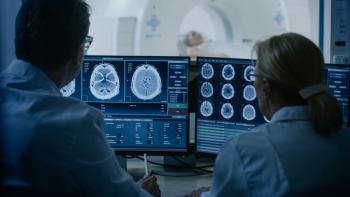
|Articles|November 24, 2021
Pharmacy Clinical Pearl of the Day: Encephalitis
Author(s)Saro Arakelians, PharmD
Common viruses causing encephalitis include herpes virus, enteroviruses, amd mosquito- and tick-borne viruses.
Advertisement
Clinical Pearl of the Day: Encephalitis
Encephalitis is inflammation of the brain. There are several causes, but the most common is a viral infection.
Insight:
- Encephalitis often causes only mild flu-like signs and symptoms—such as a fever or headache—or no symptoms at all.
- In some cases, encephalitis can be life-threatening. Timely diagnosis and treatment are important because it's difficult to predict how encephalitis will affect each individual.
- Symptoms include headache, fever, aches in muscles or joints, fatigue or weakness, confusion, agitation, hallucinations, and possible seizures.
- Primary encephalitis occurs when a virus or other agent directly infects the brain. The infection may be concentrated in a single area or widespread. A primary infection may be a reactivation of a virus that had been inactive after a previous illness.
- Secondary encephalitis results from a faulty immune system reaction to an infection elsewhere in the body. Instead of attacking only the cells causing the infection, the immune system also mistakenly attacks healthy cells in the brain. Also known as post-infection encephalitis, secondary encephalitis often occurs 2 to 3 weeks after the initial infection.
- Common viruses causing encephalitis may include herpes virus, enteroviruses, mosquito-borne viruses, tick-borne viruses, rabies virus, and childhood infections.
- Treatment may include bed rest, plenty of fluids, anti-inflammatory drugs, antivirals (such as acyclovir, ganciclovir, and foscarnet), supportive care, and physical therapy.
Sources:
Newsletter
Stay informed on drug updates, treatment guidelines, and pharmacy practice trends—subscribe to Pharmacy Times for weekly clinical insights.
Advertisement
Latest CME
Advertisement
Advertisement
Trending on Pharmacy Times
1
2025 FDA Approvals Highlight the Growing Role of Biomarkers in Breast Cancer
2
SABCS 2025 Roundup: Advancing Therapy and Precision Care in Breast Cancer
3
IRAKLIA Trial Shows Body Weight Doesn’t Alter Outcomes With On-Body Injector Isatuximab
4
Ribociclib Plus Fulvestrant Shows Strong PFS and OS Benefits in Patients With Invasive Lobular Carcinoma
5


















































































































































































































